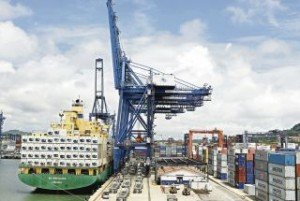(GlobeSt.com) A private development group, Panama Colon Container Port LLC, has received permits from the Panama Maritime Authority to build a $600 million container terminal here on the Atlantic side of the country. The four-berth terminal will be able to hold up to 18,000-TEU vessels, expected to greatly increase in traffic because of the $5.2 billion Panama Canal widening effort.

The company, a consortium of shareholders from Panama, Canada and Asia, has hired Jones Lang LaSalle as development advisor for the terminal. John Carver, head of JLL’s Ports, Airports and Global Infrastructure group, tells GlobeSt.com that the terminal is needed because the East Coast ports now being refurbished to handle big ships won’t be ready by the 2014 completion of the canal’s “Third Locks” project.
“This is a safety-valve,” Carver says. “New York City is raising a bridge, Florida has secured funding form the state to dredge a harbor, and Savannah and Charlston are fighting for federal funds to do the same. They’re all trying to position themselves to handle the bigger container ships, but some won’t be ready in time, or never will.”
The canal expansion will allow greater traffic flow, as well as the movement of the Super Post-Panamax vessels from Asia through the canal and into Atlantic ports. However, as Carver says, many along the East Coast and in the Caribbean don’t yet have the capacity to handle the big ships. This PCCP project will allow the big ships to stop and move cargo to smaller ships. Construction will start this summer, and should finish by the canal completion date, Carver says. His firm will soon bid out the dredging and marine construction, and will announce a terminal operator later this year.
With the US economy grinding slowly toward growth, the bigger ships aren’t necessarily carrying more goods than usual for the US ports. The size of the ships is merely an exercise in efficiency – bigger ship equals more containers, equals more goods, equals fewer crossings and less fuel.
However, there is another commercial real estate impact on the US East Coast, as not only do the harbors need widening, the distribution centers and intermodals need upgrading at the point of entry and along the way. Many cities are forming rail hub centers, where the containers can be taken from the docks to these centers, and then parceled out across the country, Carver says. “They’re building these ‘inland ports’ in Florida, Georgia, South Carolina, and even in the Midwest and Arizona,” he says.
Some have said West Coast ports will suffer from having the monopoly on the big ships. Carver, however, says he thinks the West will continue to dominate traffic. “They’re doing things such as automating terminals, to get goods through faster,” he says.